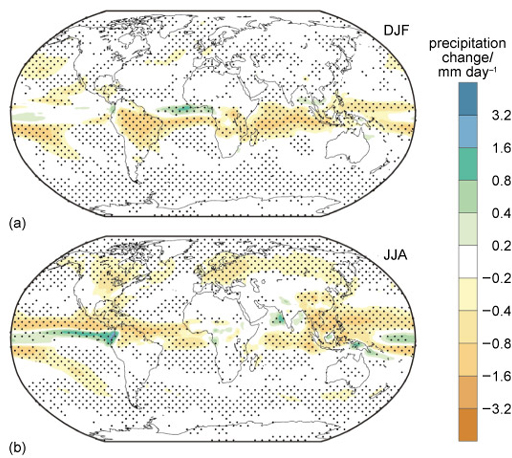2.2 Rainfall
As you have seen, changes in rainfall are arguably more important to people than temperature. So now do the same again but for precipitation (Figure 4).

Activity 2
What will be your key message to the minister, based on the information in Figure 4?
Answer
This could be a very similar key point to the temperature example, so maybe:
‘We found that even if we reduced the solar radiation reaching the Earth to exactly balance the increased CO2, the rainfall patterns weren’t the same as if we didn’t have the extra CO2.’
Write down one more sentence explaining the main pattern of change for precipitation.
Answer
One answer – concentrating on land areas, because these are likely to be the regions that policy-makers are focused on – might be:
‘Most models predict the tropics will be drier by around half a millimetre a day all year round – and that northern high latitudes are also a bit drier in the summer.’
But these results are from models. How do we know if this will work in reality?
